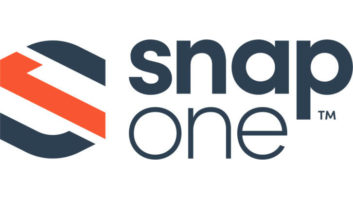The Home Theater Specialists of America (HTSA) was in an expansive mood during its semiannual member meeting here last week, where the buying group outlined plans to expand its membership base, step up its consumer marketing activities and trim the number of vendor partners to leverage its influence.
The stepped-up marketing activities could include the group’s first-ever radio or TV ads, complementing customized eight-page newspaper inserts whose frequency will rise to five from four in the coming year, said executive director Richard Glikes. Radio and TV advertising is “on the radar,” he said without specifying a launch date. If HTSA went on TV, he said, it would be with a national cable deal.
The buying group plans to expand its dealer network to all 50 states from the current 37 and shrink its vendor base from the current 45, enabling HTSA “to become more important to vendors,” Glikes continued.
An expanded member roster will help suppliers roll out new upscale A/V products to most major markets, deliver advertising and marketing efficiencies, and boost the group’s “brainpower” through knowledge sharing, said HTSA member David Young, who is heading up the membership drive. An expanded HTSA will also keep members “top of mind with vendors” when they’re offering a “special on upscale products that need to be explained,” he added. As the association expands into more states, the potential for advertising in mass media grows, Glikes noted.
The group will also expand in existing states in top metropolitan areas that have room for additional members or have no HTSA members at all, Young said. The group, currently with 48 members, wants to hold membership to less than 75 to maintain the group’s “intimacy,” Glikes noted.
Although HTSA will aggressively seek out new members, the membership drive “won’t be a fast process,” Glikes said. The focus, Young stressed, will be getting members who meet HTSA’s membership profile and who “are in the wrong group or no group at all.” HTSA will also seek out dealers “who are doing business with the wrong vendors and move them to the right vendors,” Glikes added.
Under HTSA’s bylaws, members must be in business at least five years, do 60 percent of their video business with HTSA vendors, and either generate $5 million in annual revenue or be the largest home theater business in their markets, Glikes explained.
Through the membership drive and other new activities, he said, the association wants to establish its members as “national leaders in the sale and installation of high-performance home theater systems, whole-house electronics, convergence products and emerging technologies.”
As part of that effort, HTSA will focus on honing members’ merchandising skills and stepping up its collective marketing campaign, he said. The association, for example, will develop its first custom-install brochure, probably in the next 60 days. The brochure will be customized for each participating member and include control and lighting products.
Last year, HTSA placed inserts in 50 newspapers in 22 states with total distribution of 27 million, Glikes said. HTSA has also sent out 1.4 million direct-mail pieces.
This year, stepped-up marketing activities will begin with the March placement of a “USA Today” ad by Sharp to introduce the company’s 32-inch and 37-inch high-definition LCD TVs. The ad will promote only HTSA members, who will get the products first, Glikes said.
In late March or early April, LG will highlight only HTSA members in a newspaper insert that will be distributed in members’ local-market newspapers. LG will also mail 3.5 million direct-mail pieces to member markets, Glikes said.
While stepping up its marketing campaign, HTSA wants to increase member participation in its marketing activities. One-fourth of HTSA’s members typically don’t participate in the group’s marketing programs, in part because of disparate marketing strategies, Glikes said. HTSA members come in three flavors: promoting specialists, smaller hybrid members that do a mix of retail and custom, and members that are almost exclusively custom.
Despite the variations in the member base, joint marketing makes sense because all three types of members “target the same affluent customer, share similar lines, and do custom to one extent or another,” he noted.
In other initiatives, HTSA will:
- Create an Intranet site to enhance information sharing between vendors and members, and improve forecasting, reporting and product allocation in general.
- Obtain commitments from vendors to increase their contributions toward defraying members’ display-product costs.
The new strategies will help HTSA members leverage a demographic trend that works in their favor: the emergence of the so-called “new-luxury customer.” These consumers, Glikes said, are “middle-market consumers entering a market once reserved for the elite.” They are trading down in such commodities as soap but they’re trading up in many categories, including home electronics. “They go to BJ’s for toilet paper and soap and to specialists for luxury goods,” Glikes explained.
These consumers are trading up in part because rising housing values have increased their net worth and because discount retailers, in feeding the trade-down trend, freed up $100 million in consumer spending in 2002 alone, he said.
Households with incomes of $100,000 trade up in six categories, and $200,000-income households trade up in eight, Glikes said. The top 10 trade-up categories include kitchen appliances, furniture, home electronics, cars, shoes, cookware, and travel.
Members are already reaping the benefits of the trend, Glikes reported. Despite declining prices on products such as plasma TVs, HTSA member sales are expected to grow 20 percent or more on a combined basis in 2004, he said, with growth occurring in the retail and custom segments, although custom is yielding the most expansion, he said.
Among the 43 member dealers attending, all but two reported sales growth in the first two months of the year compared to the year-ago period. Their increase averaged 15 percent to 20 percent, and one reported 35 percent growth, Glikes said.
Business began to turn around in September, driven by an economic turnaround and demand for high-priced flat-panel displays, Glikes said.
The volume of purchases generated through HTSA buying programs rose 10 percent to 12 percent in 2003, driven mainly by flat-panel display sales, he noted.
Revenue growth isn’t everything, however. Charles O’Meara, president of Absolute Sound in Winter Park, Fla., said his retail and custom revenues are rising, but with ticket prices falling, he is focused on raising margins. Consumers can buy “really good projectors” at $10,000 today to deliver the performance of yesterday’s $30,000 models, he explained.













